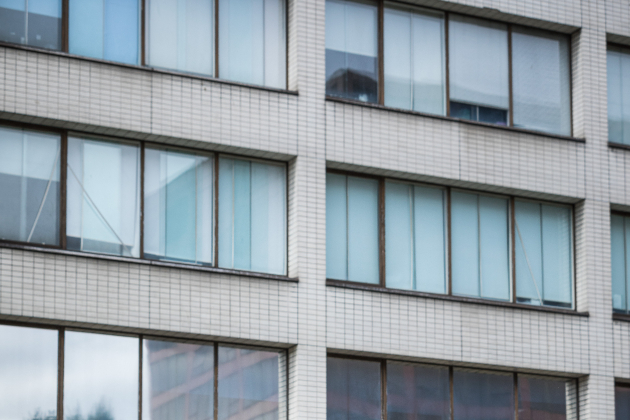You might have heard about RAAC in the news recently. It’s a material widely used in the construction of public buildings from the 1950s to mid-90s.
The use of RAAC led to the closure of more than 100 schools across England in summer 2023, and was found to be a risk to hospitals, housing blocks and other public buildings, too.
NHS hospital trusts in England were recently asked to prepare for evacuation as part of ongoing business continuity planning because of RAAC concerns. NHS England issued the instruction to all 224 health trusts. However, this is a UK-wide issue and NHS trust and health board buildings have been subject to review.
In England, as of 29 February 2024, there are 54 hospital sites with confirmed RAAC in the rolling national programme, which has been in place since 2021. Since May 2023, 31 sites have been identified, following updated monitoring guidance from the Institution of Structural Engineers. Sites join the programme regardless of the extent to which RAAC is present on the estate or whether it is in clinical or non-clinical space. There are now 4 sites that have entirely eradicated previously confirmed instances of RAAC. Meanwhile, 7 hospitals that are most affected by RAAC are part of the New Hospital Programme, due for full replacement by 2030.
In Scotland, surveys are ongoing as part of the Discovery Survey programme. RAAC has been confirmed in a number of hospitals and other properties.
In Wales, the government has provided budget to deal with RAAC issues identified at Withybush Hospital.
What is RAAC?
RAAC is a lightweight precast concrete material with air bubbles formed inside due to the autoclaving process.
RAAC was widely used as a building material because it is cheap, lightweight and provides good thermal insulation. However, there are several structural deficiencies associated with it including cracking, excessive displacements and durability.
Where is RAAC found?
RAAC was primarily used in roof panels but was also used in:- exterior walls
- interior walls
- floor systems, especially upper floors
- façade cladding
- firewalls
- retaining walls
- pipes and ducts
- partition panels
- prefab construction.
What are the risks?
RAAC is weaker than traditional concrete and has a lifespan of approximately 30 years, after which it starts to deteriorate. RAAC planks can develop hairline fractures leading to collapse.
Because of its porous nature, water can seep through RAAC causing further weakness and damage. The Health and Safety Executive state that RAAC is “now life expired. It is liable to collapse with little or no notice.”
There have been instances of roofs and ceilings collapsing within school and hospital buildings presenting a risk of serious injury to people working there.
There is also a risk of asbestos. RAAC is generally not visible, for example it could be behind walls or above ceilings. Therefore there’s a likelihood that asbestos is also present for buildings constructed prior to 2000.
Water leakage could damage the building infrastructure further and cause damage to ceilings, walls, floors and equipment. This also links to the risk of exposure to asbestos as any building damage can result in asbestos in those locations being disturbed or damaged.
Due to the water damage and damp areas RAAC could cause, there’s an additional risk of mould and spores developing. Staff are at risk of breathing in spores which may cause or exacerbate respiratory issues and illness. Mould and spores may impact on effective infection prevention and control, too.
What next?
Nursing staff and patients deserve to feel safe. Employers have a duty under the Health and Safety at Work Act 1974 to provide a safe working environment.
Staff should be properly briefed by their employer and provided with relevant information about their place of work. Employers have a legal duty to make sure staff, and others who could be affected, such as patients and visitors, are safe.
Staff should have no qualms in raising concerns with their employer if they’re worried about the buildings they’re working in. Any changes to wall, floor or ceiling shape, leaks, new cracks, or dust and debris, should be recorded.
For those trusts where there’s an ongoing risk of buildings collapsing, we expect those responsible for management and maintenance to act urgently. This means investigating where RAAC has been used and taking appropriate action to make buildings safe.
If you have concerns about this issue and how it’s being handled where you work, contact the RCN for advice and support.
What will the RCN do?
If you have an RCN health and safety rep where you work, they’ve been asked to seek assurances that your employer is following government guidance and advice and is taking the necessary steps to identify and mitigate risk. Where RAAC has been identified, they’ll check that your employer has an emergency evacuation plan in place.
If a health and safety rep suspects a building where members work contains RAAC, they’ve been advised to contact their employer to find out whether this is confirmed, and if any assessment has been made of the building’s structural strength. Health and safety reps have a right to view any assessments relating to the safety of a building where members work.
Where issues are identified, they need mitigating as soon as possible and NHS organisations should follow instructions set out by their respective national bodies, including development and testing of emergency evacuation plans.
Members should be encouraged to report any concerns about the buildings they work in to their managers, complete an incident form and let their RCN rep know.
If you're an RCN rep, there is specific guidance for this on the reps hub.








